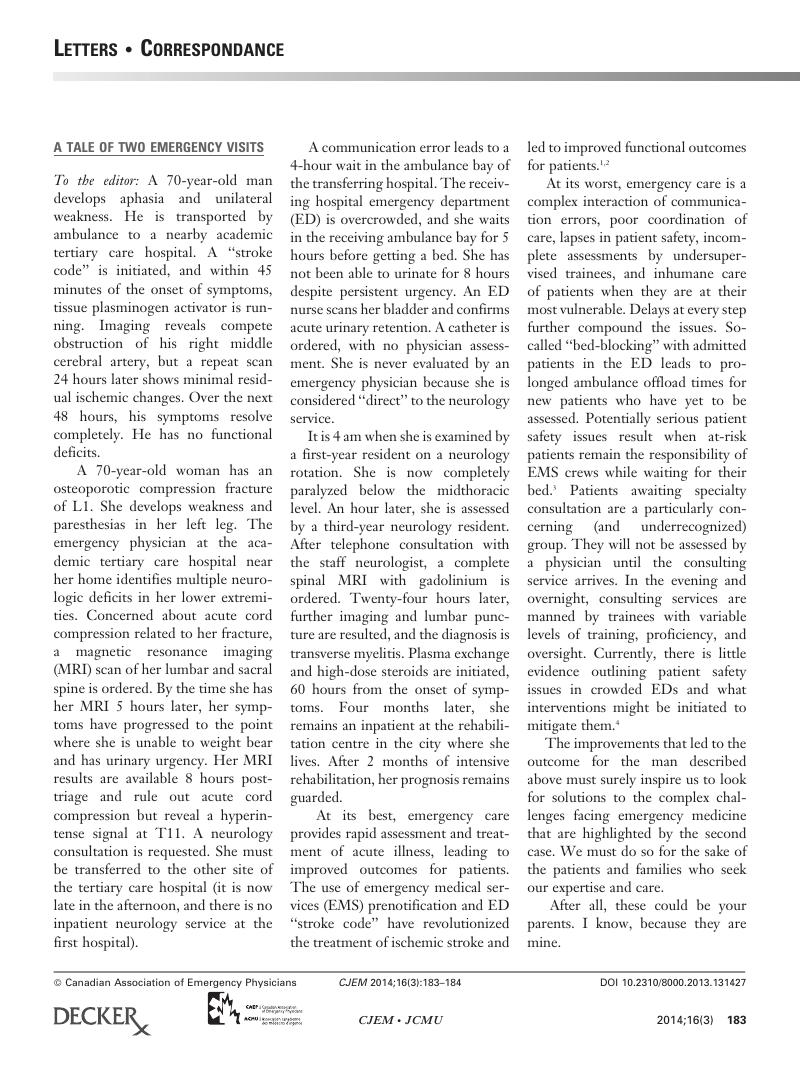No CrossRef data available.
Article contents
A Tale of Two Emergency Visits
Published online by Cambridge University Press: 04 March 2015
Abstract

- Type
- Letters • Correspondance
- Information
- Copyright
- Copyright © Canadian Association of Emergency Physicians 2014


